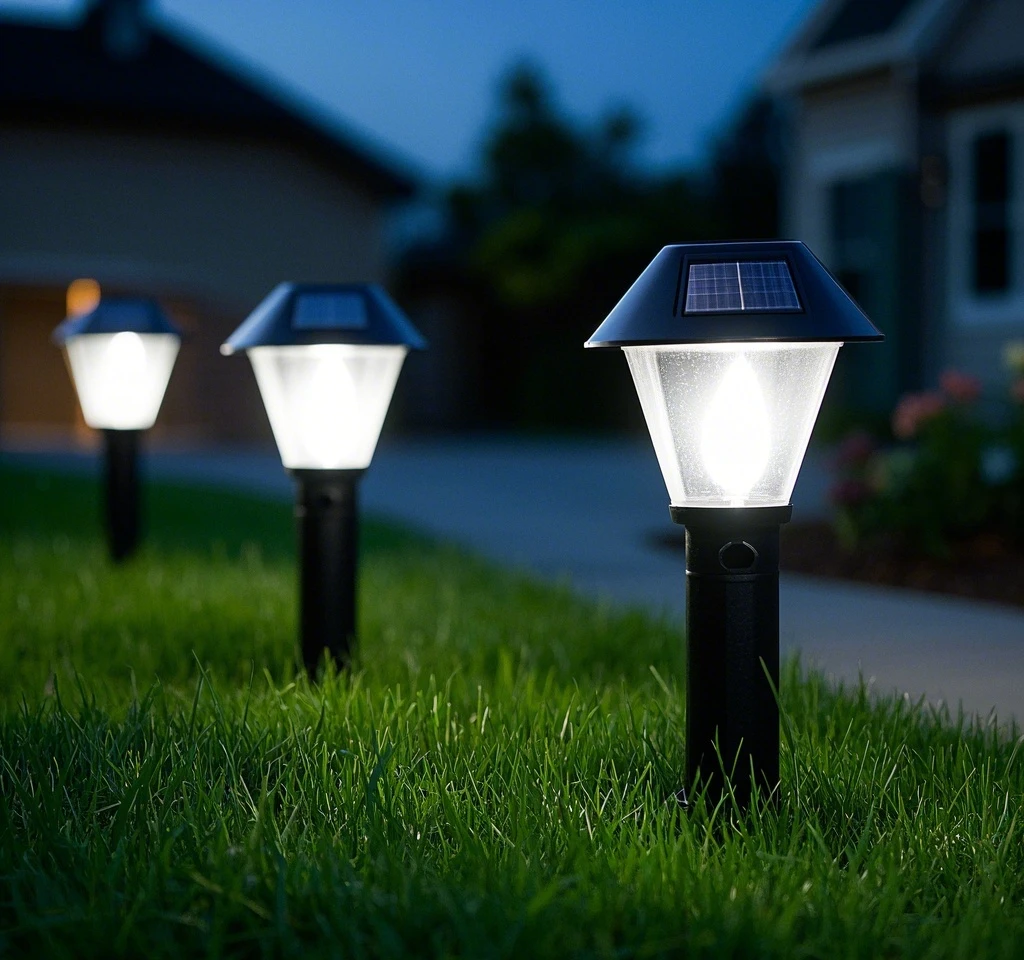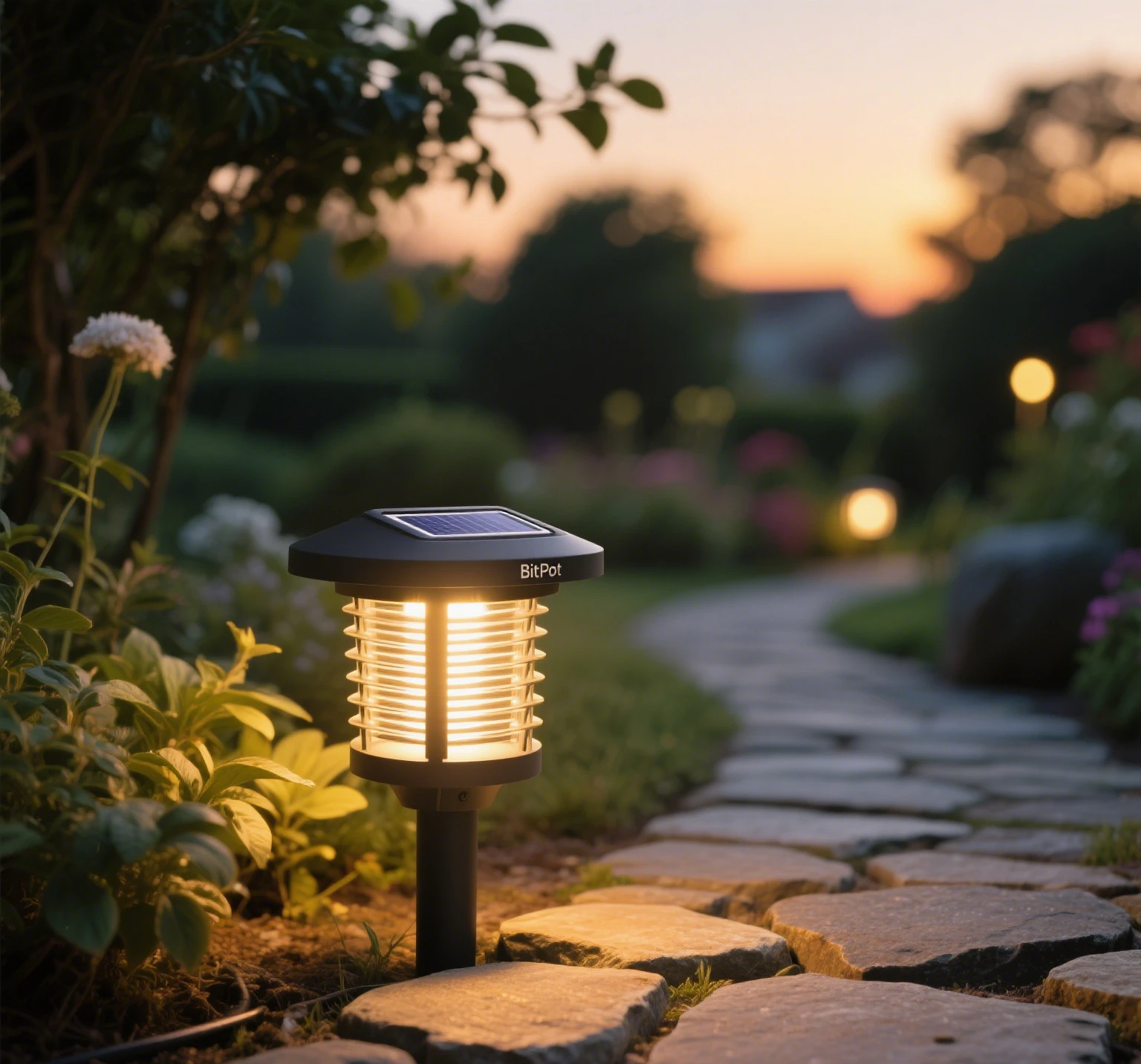Solar lights are a sustainable and cost-effective solution for illuminating outdoor solar lights spaces like gardens, pathways, and patios. The rechargeable battery for solar lights is the heart of these systems, storing energy from the sun to power lights at night. Choosing the right battery requires understanding battery types for solar lights, battery capacity for solar lights, voltage compatibility, and solar light battery compatibility with your specific model. This guide, inspired by discussions on Reddit and Quora, provides a detailed approach to selecting the ideal battery and highlights common mistakes to avoid during solar light battery replacement, ensuring optimal performance and longevity.

Why Battery Selection Matters
A well-chosen battery directly influences the brightness, runtime, and durability of your solar powered lights. An incompatible or low-quality battery can result in dim illumination, short operating hours, or even damage to the light’s circuitry. By focusing on NiMH batteries for solar lights, LiFePO4 batteries for solar lights, capacity, and voltage, you can enhance solar light performance and reduce replacement frequency. Factors like battery lifespan for solar lights and environmental resilience are also critical for maintaining eco-friendly solar light batteries in outdoor conditions.
Key Factors for Choosing a Solar Light Battery
1. Battery Types for Solar Lights
Different battery types for solar lights offer distinct advantages and limitations. The most common options include:
- NiMH Batteries for Solar Lights: Nickel-Metal Hydride (NiMH) batteries are widely used in outdoor solar lights due to their eco-friendliness and resistance to memory effect. With a standard voltage of 1.2V, they’re compatible with most AA and AAA solar lights, offering 500–2000 charge cycles for solar batteries.
- Pros: Affordable, widely available, environmentally friendly.
- Cons: Limited performance in extreme cold, moderate self-discharge rate.
- LiFePO4 Batteries for Solar Lights: Lithium Iron Phosphate (LiFePO4) batteries are gaining popularity in modern solar lights, with a higher voltage (3.2V) and up to 2000 charge cycles for solar batteries. They excel as weather-resistant solar batteries, performing well in extreme temperatures (-20°C to 60°C).
- Pros: Long lifespan, safe, thermally stable.
- Cons: Higher cost, limited compatibility with older models.
- Li-ion Batteries for Solar Lights: Lithium-ion batteries (3.7V) offer high energy density for premium solar powered lights. They provide 500–1000 charge cycles but require specific charging systems.
- Pros: High capacity, lightweight.
- Cons: Expensive, sensitive to overcharging.
- NiCd Batteries: Nickel-Cadmium batteries are outdated due to cadmium’s environmental impact and memory effect, making them less suitable for modern eco-friendly solar light batteries.
- Cons: Toxic, less efficient, avoid unless required by older models.
Recommendation: Opt for NiMH batteries for solar lights for standard applications due to their cost-effectiveness and compatibility. Choose LiFePO4 batteries for solar lights for advanced models requiring durability in harsh climates.
2. Battery Capacity for Solar Lights (mAh)
The battery capacity for solar lights, measured in milliamp-hours (mAh), determines how long your lights will stay on. Common capacities include:
- Low Capacity (600–1000 mAh): Suitable for small decorative lights needing 4–6 hours of runtime.
- Medium Capacity (1000–2000 mAh): Ideal for pathway or garden lights requiring 8–10 hours of illumination.
- High Capacity (2000–2800 mAh): Best for high-power outdoor solar lights, such as floodlights, needing 10–12 hours of runtime.
Tip: Match the mAh rating for solar lights to your light’s power requirements. A higher capacity than recommended can strain the solar panel, while a lower capacity may lead to insufficient runtime.
3. Voltage Compatibility
The voltage for solar light batteries must align with the light’s specifications to prevent damage. Common voltages are:
- 1.2V: Standard for NiMH batteries for solar lights and most AA/AAA models.
- 3.2V: Used in LiFePO4 batteries for solar lights, common in newer designs.
- 3.7V: Found in Li-ion batteries for solar lights, typically in high-end lights.
Using the wrong voltage compatibility can cause overcharging or circuit damage. Always check the light’s manual or battery compartment for voltage requirements before purchasing.

4. Solar Light Battery Compatibility
Ensuring solar light battery compatibility involves more than just type and voltage:
- Physical Size: Most solar lights use AA or AAA batteries, but some require custom sizes or button-cell batteries. Verify the battery compartment’s dimensions.
- Battery Chemistry: Confirm the solar panel and charging circuit support the battery type (e.g., NiMH vs. LiFePO4).
- Manufacturer Recommendations: Some brands, like Bitpott, specify batteries for optimal solar light performance. For example, Bitpott pathway lights often pair well with 2000 mAh NiMH batteries.
Tip: Consult the manufacturer’s website or manual to ensure the battery matches your light’s specifications.
5. Environmental and Performance Considerations
Outdoor conditions impact battery lifespan for solar lights and performance:
- Temperature Resilience: Weather-resistant solar batteries like LiFePO4 perform better in extreme heat or cold compared to NiMH, which struggles below -10°C.
- Low Self-Discharge Rate: Batteries with a low self-discharge rate, such as Panasonic Eneloop, retain charge longer during cloudy periods or storage.
- Charge Cycles: Choose batteries with high charge cycles for solar batteries (1000–2000 cycles) to minimize replacement frequency.
Recommendation: For harsh climates, prioritize LiFePO4 batteries for solar lights or NiMH batteries with robust weather ratings.
Top Battery Recommendations
- Panasonic Eneloop AA NiMH (2000 mAh, 1.2V): Ideal for most outdoor solar lights, with 2100 charge cycles and a low self-discharge rate. Price: $15–$20 for a 4-pack.
- POWEROWL AA NiMH (2800 mAh, 1.2V): High mAh rating for solar lights, perfect for long-runtime needs. Up to 2000 charge cycles. Price: $18–$25 for an 8-pack.
- HQRP LiFePO4 AA (1200 mAh, 3.2V): Best for 3.2V-compatible lights, offering excellent battery lifespan for solar lights. Price: $20–$30 for a 4-pack.
- Tenergy Solla AA NiMH (1300 mAh, 1.2V): Budget-friendly option with 2000 charge cycles, suitable for standard solar powered lights. Price: $10–$15 for an 8-pack.
- AmazonBasics AA NiMH (2000 mAh, 1.2V): Affordable choice for everyday use, with 1000 charge cycles. Price: $12–$18 for an 8-pack.
Common Mistakes to Avoid During Solar Light Battery Replacement
Improper solar light battery replacement can reduce performance or damage your lights. Avoid these errors, frequently discussed on Reddit and Quora:
- Mismatched Voltage: Using a 3.2V LiFePO4 battery in a 1.2V NiMH-compatible light can fry the circuit. Always verify voltage for solar light batteries.
- Incorrect Battery Type: Mixing NiMH batteries for solar lights with NiCd or Li-ion can cause charging issues or shorten battery lifespan for solar lights. Stick to the recommended type.
- Choosing Low-Quality Batteries: Generic batteries often lack charge cycles for solar batteries or safety features, leading to frequent replacements. Opt for trusted brands like Panasonic or Tenergy.
- Ignoring Capacity Needs: Installing a low mAh rating for solar lights in high-power lights results in short runtime. Match capacity to the light’s demands.
- Incorrect Polarity: Inserting batteries with reversed positive/negative terminals can damage the light. Check polarity markings carefully.
- Dirty Contacts: Corroded or dirty battery terminals reduce charging efficiency. Clean with a cotton swab and vinegar before installing new batteries.
- Assuming Universal Fit: Not all AA or AAA batteries are compatible. Confirm solar light battery compatibility to avoid performance issues.
- Neglecting Maintenance: After solar light battery replacement, failing to clean the solar panel or reposition the light for sunlight exposure can limit charging.
Tips for Selecting and Maintaining Solar Light Batteries
- Check Manufacturer Guidelines: Review your light’s manual for recommended battery types for solar lights, voltage, and capacity to ensure solar light battery compatibility.
- Prioritize High Charge Cycles: Batteries with 1000–2000 charge cycles for solar batteries offer better value for daily-use lights.
- Buy from Reputable Retailers: Purchase from trusted sources like Amazon or Bitpott’s official site to avoid counterfeit batteries that compromise solar light performance.
- Clean Solar Panels: Wipe panels with a soft cloth and soapy water every 2–3 months to maintain solar panel efficiency and optimize charging.
- Store Batteries Properly: Remove batteries during winter or prolonged cloudy periods and store in a cool, dry place to extend battery lifespan for solar lights.
- Use Smart Chargers: For external charging, use a charger designed for your battery type to prevent overcharging and maintain battery health for solar lights.
- Monitor Battery Performance: Replace batteries every 2–3 years or when runtime drops significantly to ensure timely solar light battery replacement.
- Choose Weather-Resistant Batteries: Select weather-resistant solar batteries for lights exposed to extreme conditions to enhance durability.
Conclusion
Choosing the right rechargeable battery for solar lights is crucial for maintaining the performance and longevity of your outdoor solar lights. By evaluating battery types for solar lights like NiMH and LiFePO4, ensuring proper battery capacity for solar lights and voltage compatibility, and confirming solar light battery compatibility, you can keep your lights shining brightly. Avoiding common mistakes during solar light battery replacement, such as using incorrect voltage or low-quality batteries, protects your investment. With the right battery and regular maintenance, your solar powered lights will provide reliable, eco-friendly illumination for years.


Leave a Reply